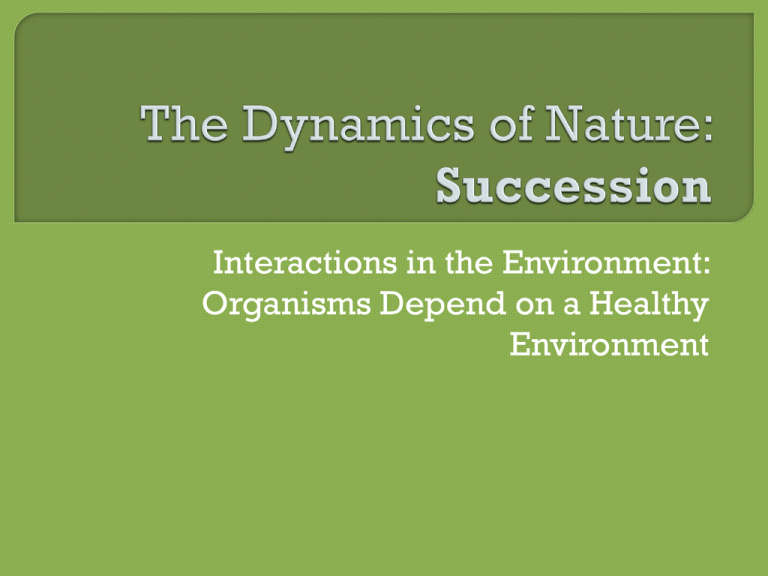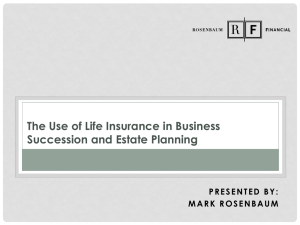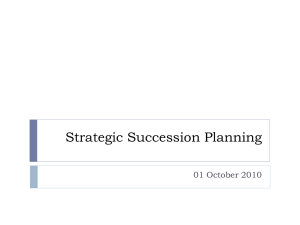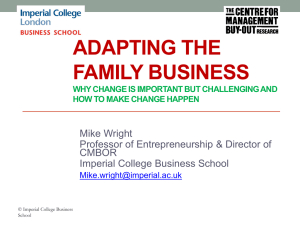The Dynamics of Nature: Succession
advertisement

Interactions in the Environment: Organisms Depend on a Healthy Environment Learning Goals: • Distinguish between primary and secondary succession. Success Critera: • I can explain primary succession. • I can explain secondary succession. • I can explain some effects of human interference on succession. Have you ever noticed grass or other plants growing in a an old parking lot? Definition of succession: A series of gradual changes that result in a the replacement of one community of plants and animals by another So, what may be dominant plants and animals at one time are gradually replaced by new species over time. Plants play a key role in this. Definition: succession that develops a community of plants and animals in an area where no living things existed before. Imagine a volcano, landslide or earthquake has created a large area of newly exposed bare rock. Lichen are the first organisms to start growing on the rock and they begin the process of building soil. Lichen use photosynthesis to make food and to grow and they produce acids that help them to absorb nutrients from the rock and air. These acids break down rock into soil. Soon moss begins to grow. The decay of lichen and moss builds more new soil and soon small plants begin to grow. Plant roots continue to break up the rock and keep the existing soil in place. Soon, grasses and weeds start to grow. As each generation of plant grows and dies, more soil is created which allow bigger plants to grow. The bigger plants compete for sunlight and shorter plants die out. The process will continue until eventually a forest is developed. An example of primary succession after a volcano has created a new island. Definition: succession that develops a community in an area after it has been disturbed Examples: forest fires, strong winds, human-made disturbances (eg. Clear cutting forests) In secondary succession, soil already exists and needs to be revitalized. Seeds from grasses and wildflowers may blow in from neighbouring communities. They grow and enrich the soil which in turn promote growth of bigger plants. The process begins again. An example of secondary succession after a forest fire. The following video illustrates both primary and secondary succession: http://www.youtube.com/watch?v=V49Io vRSJDs As each new plant species begins to grow, consumers that feed on that species move into the community. Early communities are simple with few species interacting. As succession progresses, communities become more complex and contain many interactions. Humans often replace complex ecosystems with simple ones designed for their own needs which are not sustainable. Example: reforestation companies may plant trees after clear-cutting, but only one species of tree is planted resulting in less complex food web. Few organisms can be supported and problems like disease or insect invasion are likely to occur. It is best when succession can occur naturally. In our next lesson, you will be studying Human Impacts on Ecosystems. In the meantime the following video may help you remember today’s lesson! http://www.youtube.com/watch ?v=rzE6BNNLew0











